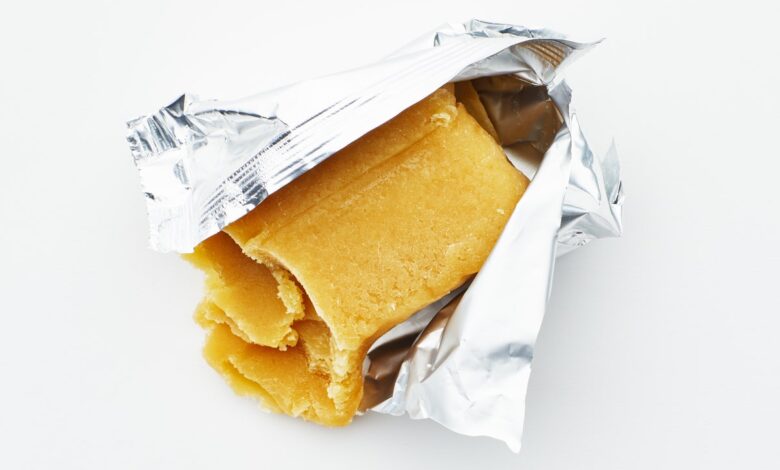
Compared to almond paste, marzipan has a higher proportion of sugar, which makes it sweeter, smoother, and more pliable—think Play-Doh. It’s typically rolled, molded, dyed, and/or shaped (like into these adorable fruits!) and served as its own or used as a decorative element in larger desserts. Depending on where in the world you are, marzipan might come from the store flavored—in Germany, for example, it often contains rose water.
Can I use almond paste and marzipan interchangeably?
Will you hate me if I say no? The two products are different enough that, just like those near-doppelgangers cucumbers and zucchini, you shouldn’t be swapping them willy-nilly.
You can, however, MacGyver marzipan from almond paste by mixing it with additional sugar in the form of confectioners’ sugar, simple syrup, and/or corn syrup. And, while you can’t make almond paste from marzipan, you can make almond paste at home fairly easily.
How can I make almond paste at home?
All you need is a food processor and a bit of patience. In Classic German Baking, Weiss instructs puréeing blanched almonds with sugar, almond extract, and rum until you have a very smooth paste, which could take 10 minutes, if not longer. Use the almond paste immediately or store it in the refrigerator, where it keeps for several weeks.
Or take a shortcut and use almond flour instead of whole nuts. In The King Arthur Baking Company’s All-Purpose Baker’s Companion, almond paste is made by combining almonds with confectioners’ sugar, almond extract, and pasteurized egg whites (some almond paste recipes contain egg whites, others do not), then kneading the mixture by hand until it holds together. If you’re seeking out the light color and delicate texture of commercially made almond paste, be sure to use almond flour that’s made from blanched (i.e. naked) almonds—the pesky skins would make for a darker paste with a deeper flavor.
But then there’s frangipane…
Frangipane contains eggs, butter, and flour in addition to ground almonds and sugar (there’s sometimes liquor, juice, cocoa powder, or spices, too!). It’s a much looser mixture that’s made at home (rather than purchased in the store) and used, most commonly, as a filling in pies, cookies, and pastries—it puffs lightly in the oven and takes on a rich, chewy-tender texture. To confuse things more, frangipane can be made with almond paste as its foundation (which allows you to skip grinding almonds or almond flour entirely!), and also without almonds—and without nuts, what?!—entirely.
If all of this seems confusing, just remember that while almond paste, marzipan, and frangipane are all members of the Almonds-Mixed-With-Sugar family, they’re individuals. Treat them as such and your baked goods (and displays of miniature edible snowpeople!) will thank you.
Have almond paste, will make cookies





